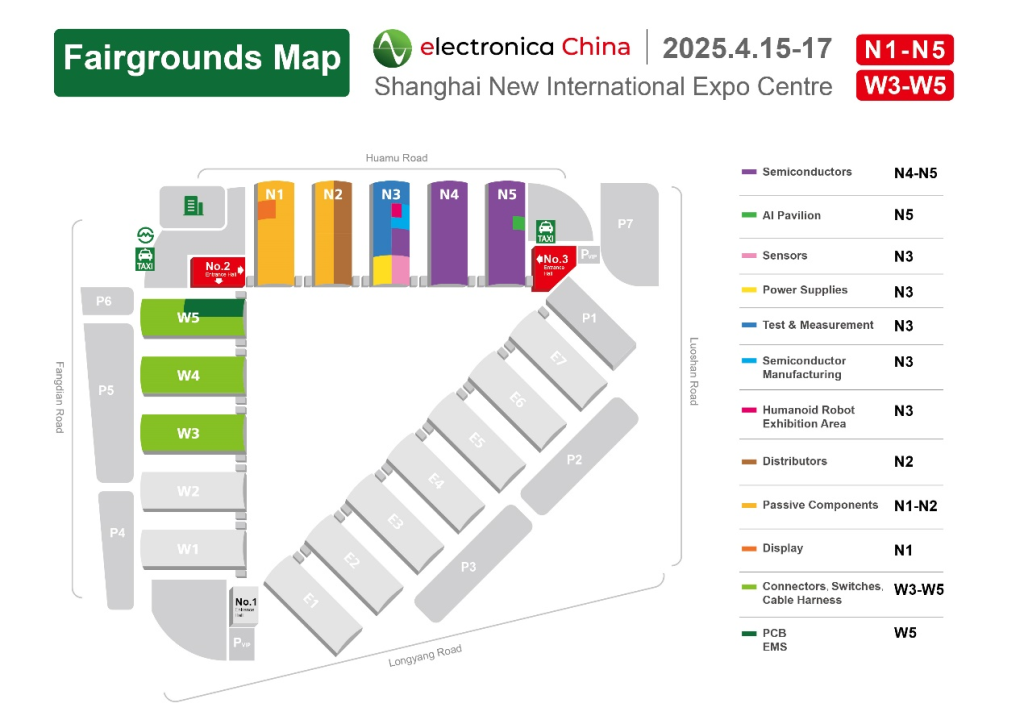Збирач потоків
Brain-Inspired Neuromorphic Chips Redefining AI Acceleration
Neuromorphic computing represents a groundbreaking paradigm shift in computing, designed to replicate the structure and functionality of biological neural networks. Traditional Von Neumann architectures suffer from inefficiencies due to the separation of memory and processing units, leading to bottlenecks in handling AI and real-time workloads. Neuromorphic chips address these challenges through event-driven computation, parallel processing, and biologically inspired synaptic plasticity. Companies such as Intel, IBM, BrainChip, and SynSense are spearheading the development of these chips, promising enhanced AI acceleration, real-time data processing, and ultra-low power consumption. This article explores the fundamental principles, architectural advancements, diverse applications, industry trends, and future prospects of neuromorphic computing.
Principles of Neuromorphic ComputingNeuromorphic computing is grounded in the principles of spiking neural networks (SNNs) and synaptic plasticity, enabling energy-efficient and event-driven information processing. Unlike traditional deep learning architectures that rely on dense matrix multiplications, SNNs leverage discrete electrical impulses (spikes) for data transmission. This asynchronous operation ensures that computations occur only when necessary, significantly reducing energy consumption. Another core principle is in-memory processing, where neuromorphic chips integrate memory and computation units to eliminate data transfer bottlenecks, a limitation of conventional architectures.
Adaptive learning mechanisms further distinguish neuromorphic chips from traditional AI accelerators. Inspired by Hebbian learning and long-term potentiation, these chips modify synaptic weights dynamically based on data patterns, mirroring human cognitive processes. Additionally, neuromorphic architectures exhibit massive parallelism, as thousands or even millions of artificial neurons and synapses operate simultaneously. This makes them ideal for real-time, low-latency AI inference applications in power-constrained environments such as edge devices and wearables.
Architectures of Neuromorphic ChipsNeuromorphic chip architectures vary widely, encompassing digital, analog, and hybrid designs. Digital neuromorphic processors, such as Intel’s Loihi 2, leverage asynchronous spike-based processing with over one million programmable neurons and hierarchical synaptic plasticity mechanisms. Loihi 2 features optimized learning rules, improved interconnectivity, and enhanced support for complex AI workloads, making it a leading candidate for next-generation AI acceleration.
BrainChip’s Akida platform, another prominent digital neuromorphic processor, is tailored for ultra-low power AI inference at the edge. It employs event-based processing, leveraging hierarchical temporal memory (HTM) principles to achieve highly efficient pattern recognition. The Akida chip is designed to optimize convolutional neural network (CNN) inference while maintaining minimal power consumption, making it suitable for applications such as smart surveillance, autonomous systems, and health monitoring.
Analog and mixed-signal neuromorphic chips offer even greater efficiency by utilizing physical transistor properties to mimic neuronal activity. IBM’s TrueNorth, a hybrid digital-analog neuromorphic system, incorporates one million neurons and 256 million synapses, enabling large-scale SNN processing with extremely low power consumption. Memristor-based neuromorphic architectures, such as those under development at MIT and HP, integrate non-volatile resistive RAM (RRAM) elements to implement synaptic weights directly in hardware, further reducing energy overheads.
Another emerging approach is 3D neuromorphic architectures, where stacked layers of artificial neurons are fabricated to enhance computational density and minimize interconnect delays. Researchers at ETH Zurich and Stanford University are exploring hybrid 3D CMOS-memristor designs to enable brain-scale neuromorphic computing, opening new frontiers in AI efficiency and scalability.
Applications of Neuromorphic ChipsNeuromorphic computing has transformative applications across diverse sectors, revolutionizing AI-driven decision-making, robotics, medical diagnostics, and edge intelligence.
Edge AI and IoT
Neuromorphic chips excel in ultra-low power AI inference, making them ideal for always-on smart sensors, real-time environmental monitoring, and security surveillance. They enable real-time AI processing in IoT devices, allowing predictive maintenance, autonomous energy management, and adaptive user interfaces in smart homes and industrial automation.
Robotics and Autonomous Systems
Neuromorphic processors are redefining robotics by enabling real-time, low-latency decision-making. Their ability to process sensory inputs dynamically makes them well-suited for applications in humanoid robots, collaborative automation, and autonomous vehicles. For instance, neuromorphic vision sensors enhance object detection and navigation by replicating biological vision processing, enabling real-time adaptation in self-driving cars and drones.
Healthcare and Biomedicine
In healthcare, neuromorphic chips power advanced neural interfaces, brain-machine interaction (BMI) systems, and real-time biomedical signal processing. They facilitate ultra-fast EEG and ECG analysis, enabling rapid diagnosis of neurological disorders such as epilepsy and Parkinson’s disease. Additionally, neuromorphic AI enhances medical imaging, assisting in early disease detection with significantly reduced computational overhead.
Cybersecurity and AI at the Edge
The adaptive learning capabilities of neuromorphic chips make them well-suited for AI-driven cybersecurity solutions. Their ability to detect anomalous patterns in real-time enhances intrusion detection systems (IDS) and fraud prevention mechanisms. Moreover, neuromorphic architectures support biometric authentication technologies, such as facial recognition and voice-based identity verification, ensuring energy-efficient, secure access control solutions.
Industry Insights and Market TrendsThe neuromorphic computing landscape is evolving rapidly, with significant investments from semiconductor giants, startups, and government agencies.
Key Players and Research InitiativesIntel has established the Neuromorphic Research Community (INRC) to accelerate the adoption of Loihi-based computing platforms. IBM continues to explore hybrid analog-digital neuromorphic accelerators, while BrainChip expands the Akida ecosystem for low-power AI applications. Emerging startups like SynSense and Innatera are focusing on commercializing neuromorphic AI accelerators for edge computing, demonstrating a growing market appetite for these technologies.
Investment and Commercialization TrendsVenture capital funding for neuromorphic startups has increased, with investors recognizing the potential of brain-inspired computing in AI acceleration and IoT. Government and defense organizations, including DARPA, are investing in neuromorphic architectures for autonomous surveillance systems, next-generation military drones, and AI-powered secure communications. Academia-industry collaborations, particularly in the U.S., Europe, and China, are driving advancements in neuromorphic hardware scalability and software frameworks.
Challenges and OpportunitiesDespite significant progress, neuromorphic computing faces challenges in software compatibility, standardization, and large-scale fabrication. Existing AI frameworks, such as TensorFlow and PyTorch, are not natively optimized for SNNs, necessitating new programming paradigms. Scalability remains a concern, as manufacturing neuromorphic chips with millions of interconnected artificial neurons requires advanced semiconductor fabrication techniques.
Future ProspectsThe next decade will witness the convergence of neuromorphic computing with emerging technologies such as quantum computing, biohybrid systems, and 3D-integrated AI architectures. Quantum neuromorphic computing, which combines quantum-inspired neural networks with spike-based processing, holds promise for solving complex optimization problems with unprecedented efficiency. Furthermore, brain-on-chip innovations, integrating living neuronal cultures with synthetic neural networks, could pave the way for biologically realistic AI models.
As AI workloads become increasingly complex, neuromorphic chips will play a crucial role in advancing edge intelligence, real-time robotics, and human-like cognition in machines. By mimicking the energy efficiency and adaptability of the human brain, neuromorphic architectures are poised to redefine the future of computing, unlocking unparalleled capabilities across diverse technological domains.
The post Brain-Inspired Neuromorphic Chips Redefining AI Acceleration appeared first on ELE Times.
electronica China 2025: High-quality Chinese and International Companies Gather at this Can’t-miss Electronics Event with 100,000 Square Meters
electronica China 2025 will take place from April 15 to 17, 2025 at the Shanghai New International Expo Centre (SNIEC), in halls W3-W5 and N1-N5. It is expected to attract a total of almost 1,800 high-quality exhibitors from domestic and international markets covering 100,000 square meters. Register now and check out the latest updates on the exhibition area!
Click to register now: https://ec.global-eservice.com/?lang=en&channel=enmd
Fairgrounds Map
Overview some important exhibition areas
Semiconductors & Sensors
In recent years, the rapid development of the Internet of Things (IoT) industry in China has positioned sensors as one of the core components of the country’s “Strong Foundation Project”. As a result, the market scale and application scenarios for sensors in China have continued to grow. electronica China 2025 will include exhibition areas for semiconductors and sensors, gathering numerous high-quality exhibitors to discuss industry development on-site.
Test and Measurement & Power Supplies
The power supply industry in China has seen rapid growth fueled by international industrial relocation, the ongoing development of China’s information technology, and the continuous advancements in the defense and military sectors. The 2025 exhibition will feature bring together companies to showcase their products and participate in technological discussions in the test and measurement, and power supply exhibition areas.
Connectors, Switches and Cable Harness
In recent years, the connector market has experienced overall growth, fueled by the rapid development of downstream industries such as consumer electronics, new energy vehicles, communications, and industrial control. electronica China 2025 will feature a connector exhibition area, inviting numerous leading exhibitors from the connector industry to showcase their new products.
PCB & EMS
With the maturation of the EMS industry model and ongoing technological advancements and capacity upgrades by companies, the global EMS market is experiencing greater diversity in its downstream customer sectors. At present, EMS is extensively applied across a range of sectors, including consumer electronics, automotive electronics, industrial control electronics, etc. electronica China 2025 will set up PCB and EMS exhibition areas.
Passive Components & Distributors
The development of technologies like 5G communication, artificial intelligence (AI), and the IoT is presenting substantial opportunities for the passive components industry. Additionally, passive components are widely used in such fields as telecommunications, power, automotive electronics, and healthcare, providing substantial growth opportunities for the industry. electronica China 2025 will set up passive components and distributors exhibition areas.
Click to register now: https://ec.global-eservice.com/?lang=en&channel=enmd
Learn more about electronica China: https://www.electronicachina.com.cn/en
The post electronica China 2025: High-quality Chinese and International Companies Gather at this Can’t-miss Electronics Event with 100,000 Square Meters appeared first on ELE Times.




